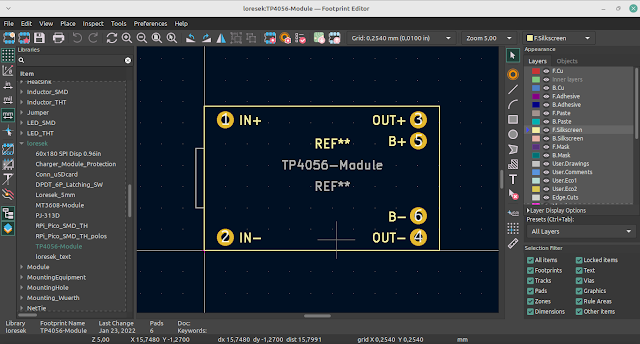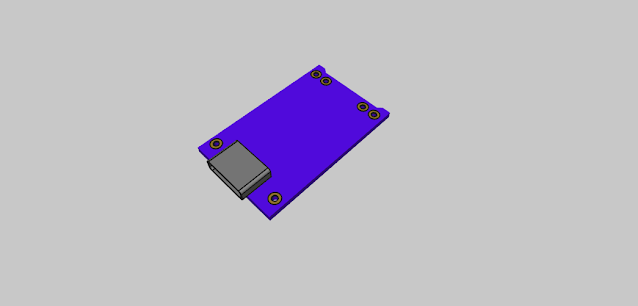PicoROM: The Ultimate 8-Bit ROM Emulator for Retro Arcade Hardware
 |
| PicoROM in action |
For hardware enthusiasts and arcade restoration aficionados, experimenting with vintage systems often requires a lot of patience, especially when it comes to swapping out ROM chips. But what if there was a way to rapidly prototype and iterate without the hassle of burning and reburning EPROMs? Enter PicoROM—an innovative solution that brings speed and flexibility to your retro hardware projects. In this review, we’ll take a closer look at what PicoROM offers and why it’s a must-have tool for anyone diving into arcade hardware experimentation.
What is PicoROM?
PicoROM is an 8-bit ROM emulator designed in a DIP-32 compatible form factor, making it a drop-in replacement for traditional EPROMs like the 27C020. Built around the powerful Raspberry Pi RP2040 microcontroller, PicoROM is perfect for those who need a quick and reliable way to emulate ROMs up to 2Mbit (256KBytes) in size, with impressive speeds of 100ns—all while fitting within a compact, familiar package.
The Purpose of PicoROM
The main purpose of PicoROM is to enable rapid iteration and testing when working with arcade hardware or other vintage systems. It allows you to upload new ROM data from your PC on the fly, eliminating the need for EPROM burners and reducing the time-consuming process of physically replacing chips. Whether you’re a hobbyist developing new game ROMs or a technician debugging old arcade boards, PicoROM can save you hours of work.
Key Features
1. Compact and Compatible Hardware Design
The PicoROM’s hardware design is both simple and effective. It uses the Raspberry Pi RP2040, known for its dual-core performance and abundant memory. The RP2040’s 264KBytes of static RAM are fully utilized, storing up to 256KBytes of ROM data. This choice ensures that the emulated ROM operates at high speed, while the external flash is reserved for storing the firmware, configuration settings, and a backup of the ROM image.
A unique feature of PicoROM is its vertically mounted USB-C connector. While this might look unusual, it serves a practical purpose: it keeps the entire hardware within the DIP-32 form factor, avoiding interference with adjacent components on your board. This thoughtful design choice enhances compatibility, especially when working with tight PCB layouts.
2. Flexible Firmware for High-Speed Emulation
The firmware, written in C/C++ using the Pico C SDK, is where the magic happens. It leverages the RP2040’s dual-core architecture, with one core dedicated to emulating the ROM data and another handling communication with the host PC. Core1 executes a tight assembly loop, interpreting address lines and presenting data on the output pins with high-priority bus access, ensuring smooth, single-cycle read/write operations.
In addition, the firmware uses the RP2040’s Programmable I/O (PIO) state machines to handle chip and output enable signals. This combination of techniques allows PicoROM to provide fast and accurate emulation, making it suitable even for time-sensitive applications like arcade ROM replacements.
3. Powerful Host Software
The host-side software is another highlight of the PicoROM project. Written in Rust, the command-line tool (called picorom) provides a robust interface for uploading ROM data to the emulator. It supports listing connected PicoROM devices, assigning unique names, and uploading new data—all essential features when dealing with complex systems that might have multiple ROMs.
Additionally, there is a Python module (pypicorom) included in the project, which mirrors the functionality of the command-line tool. This module allows for easy scripting and integration into higher-level software workflows. The Python API supports reading and writing memory, making it ideal for building automated test setups or custom tools tailored to specific projects.
4. Two-Way Communication for Enhanced Testing
One of the standout features of PicoROM is its two-way communication capability. The firmware includes support for a byte-stream exchange between the host PC and the target system. This feature allows you to send and receive data directly from the target system using a predefined region of the emulated ROM memory.
This two-way communication system is especially useful when developing custom software or debugging hardware, as it enables you to interact with the ROM data in real-time. You can read from a designated address to receive data from the host or write to one of 256 addresses to send data back. This setup allows for a data transfer rate of about 5KBytes/sec, sufficient for many testing and debugging tasks.
PCB Layout and Open-Source Design
 |
| PicoROM PCB design in KiCAD |
For those interested in the hardware details, the KiCad project files are included in the hardware/ directory of the repository. The layout is designed to fit the standard DIP-32 socket, making it a drop-in replacement for various EPROMs. The open-source nature of the project means you can easily modify and adapt the design to suit your specific needs.
The PCB layout is clean and well-organized, with careful attention paid to signal integrity and form factor. The vertical USB-C connector might seem unconventional, but it’s a clever solution to keep the entire design compact and avoid interference with other components.
Potential Use Cases
- Arcade Hardware Development: PicoROM is a perfect fit for those developing or repairing arcade systems, where quick ROM swaps are essential for testing and iteration.
- Retro Computing Projects: The emulator’s compatibility with standard EPROM pinouts makes it an excellent tool for retro computer enthusiasts working on custom firmware or BIOS replacements.
- Educational Tools: With its open-source firmware and host software, PicoROM is a great learning resource for those interested in microcontroller programming and hardware emulation.
Areas for Improvement
While PicoROM is a fantastic tool, there are a few minor areas where it could be enhanced:
- USB-C Positioning Flexibility: While the vertical USB-C connector is space-efficient, it might be challenging to connect in some setups. Offering an optional right-angle connector could improve versatility.
- Enhanced Data Transfer Speed: The current two-way communication speed of 5KBytes/sec is sufficient for most use cases, but faster transfers could make it even more appealing for high-speed debugging tasks.
Conclusion
The PicoROM project is a brilliant example of how a simple but well-executed design can make a big difference in the world of hardware experimentation. By leveraging the power of the RP2040 microcontroller, it delivers a fast, reliable, and flexible 8-bit ROM emulator that fits seamlessly into existing systems. Whether you’re working on arcade machines, retro computing, or custom hardware projects, PicoROM offers a hassle-free solution for rapid prototyping and debugging.
If you’re looking for a way to streamline your workflow and reduce the time spent swapping ROM chips, PicoROM is definitely worth a try. Its well-documented design, open-source firmware, and robust host software make it a valuable addition to any hardware enthusiast’s toolkit.
Reference Link
Explore the project and get started with PicoROM here: PicoROM on GitHub.










